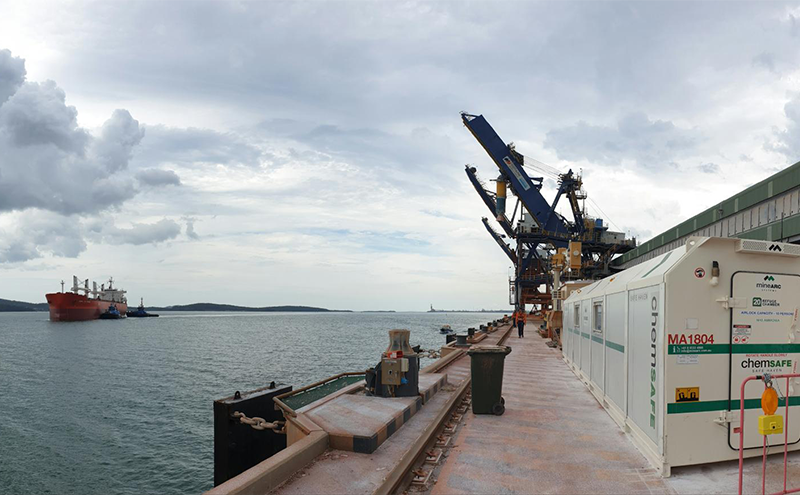The maritime industry is one of the most ancient trades in human history, with people taking to the seas to fish and venture to new lands, bringing with them culture and goods. With global trade, the industry provides millions of people with jobs – where a Country has a coastline; invariably, a port will exist.
Ports provide a safe harbour for vessels and a gateway for transferring goods and people between land and sea. Yet, it is this very nature which creates such a dangerous and often underestimated environment.
The Accidental Nature of Ports
Because these facilities are the transition between land and sea-based transport, they combine hazards from both activities in the one location.
According to the CDC, “many hazards presented by the marine environment can be encountered both on the water and at shipyards or marine terminals – and some hazards are unique to specific maritime industries. For instance, aquaculture workers may face hazards from the use of tractors or all-terrain vehicles, in addition to waterborne vessels“.1
In the United States, maritime workers are 4.7 times more likely to suffer a fatal injury than the average worker.1
Global maritime accidents have seen a downward trend in the last four years2. However, the number of casualties remains unchanged; suggesting that while safety programs positively impacted the frequency of events, when they occur, the outcome is severe.

Why Ports Pose Additional Hazards
Often goods or products are transported via sea freight due to their hazardous nature, including flammable, radioactive, volatile, or toxic substances. Chemicals shipped as cargo can cause significant harm to all personnel in proximity to a port if an incident involves fire, loss of containment, or explosions.
When transferring hazardous substances in bulk quantities, the consequence of an accident can be catastrophic. There is the potential to affect people and structures well beyond the harbour perimeter.
Some of the primary areas a hazard can occur are from:
- Staging areas and temporary storage used by multiple parties may inadvertently contain incompatible substances.
- Fire is not uncommon on ships, starting in engine rooms or holds, and can quickly spread to onboard cargo, surrounding vessels, or the pier itself, causing widespread damage, smoke, and ignition or the loss of containment of toxic substances.
- Liquid substances are transported by road, rail, or piped onto the jetty, accumulated in storage, and transferred to vessels via a system of pumps and flanges, offering several failure points. On exposure to air, liquids can vaporise and buffeted by strong coastal winds. Chemical plumes can be unpredictable, travelling large distances quickly, offering little or no warning.
With variability in the types of goods handled, accompanied by numerous companies and vessels sharing a port, it can be challenging to ensure all personnel on the facility know the surrounding hazards and if they are trained to deal with an incident.
Designed for No Escape
Wharf, quay, and jetty structures are engineered to ease vessel docking and access but provide limited escape options during an emergency. These design shortcomings may lead to entrapment or in some cases, personnel in the water. Often with one primary way onto a pier, there can be only a single pathway to evacuate.
Given the high consequences of an accident, when reviewing emergency response procedures, it would be reasonable to ask.
- What are the hazards identified in a Port’s Emergency Response Plan related to fire, chemical release or explosion, and more importantly, does it provide type-specific actions between the three?
- What are the mitigations described, and are they reducing the consequence to an acceptable level?
- Is there a reasonable escape plan?
- What standard of emergency response training has been implemented?
Expanding Port Emergency Response Planning
Rather than attempt to outrun a hazard or risk fatal exposure, strategically placed emergency shelters can provide life-saving refuge for people within the affected area.
Like passengers on a vessel seeking out lifeboats when something goes wrong, a secure muster area, such as a refuge chamber, offers people protection during a port emergency. Refuge chambers protect personnel until the crisis is managed and the location made safe to allow evacuation.
Purpose-built shelters remove the risk of exposure, entrapment, and inability to escape. ChemSAFE shelters can be easily positioned close to working areas of personnel at a facility, due to its strength, portability, and compact footprint, drastically reducing the time needed to reach safety.
With elevated levels of chemical, blast, and fire resistance, a ChemSAFE Refuge Chamber will sustain a sealed enclosure against airborne toxins, ensuring a safe, breathable habitat for occupants regardless of external conditions.3
Through conditioning of the internal shelter by controlling temperature and humidity, supplementing oxygen, and removing carbon dioxide and carbon monoxide gases, the ChemSAFE Refuge Chamber effectively acts as a life-sustaining capsule, capable of supporting personnel for extended periods in a controlled and monitored environment.
References
- MARITIME WORKER SAFETY Centres for Disease Control and Prevention https://www.cdc.gov/niosh/topics/maritime/default.html
- FleetMon – Tracking the Seven Seas https://www.fleetmon.com/
- MineARC Systems – Petrochemical Shelters for Hazardous Environments https://minearc.com/chambers/petrochemical-shelters-chemsafe/






